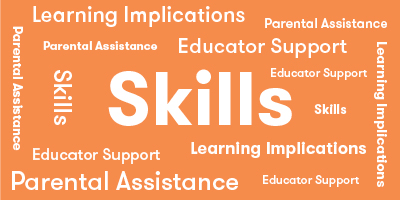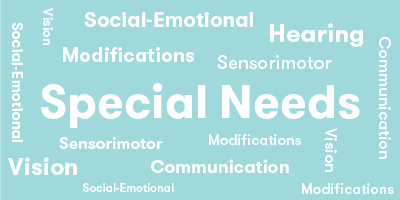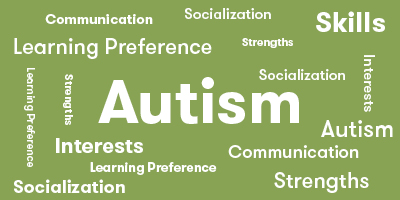




Collapsible content
Our variation of the classic “Crazy 8’s” game that has you sharing food with our Buddies and learning about the importance of a well-balanced meal.
You can play Crazy Ates with 2-6 players, ages 4 and up!
Crazy Ates is a great game for developing Color and Number Recognition Skills, as players look at the colors and numbers on their cards and try to play them on the same colors and numbers located on the card in the discard pile.
Crazy Ates also helps develop Matching Skills as players look at the colors, numbers, and food dishes on their cards and try to match them to the same colors, numbers and food located on the top card in the discard pile.
To set up the game, shuffle the deck and give six cards to each player.
If there are only two players, give each player eight cards.
Players should look at their cards, but not show the other players.
Place the remaining cards facedown creating a draw pile that everyone can reach.
Turn the top card face-up next to the draw pile to start the discard pile.
The object of Crazy Ates is to match a card from your hand, or from the draw pile to the color, or number and type of food on the top card of the discard pile.
The first player to get rid of all the cards in their hand wins the game!
On your turn, there are three options:
1. Choose and play a card from your hand that matches either the color or the number and type of food that is on the top card of the discard pile; or,
2. If you do not have a card in your hand that can be played, draw cards one at a time from the draw pile until you have a card that can be played on the top card of the discard pile; or,
3. Play a Crazy Ates -the card with the dessert!
This is a wild card and can be played at any time on any card currently on the discard pile.
When this card is played the player gets to declare what color and number it is, and the next player will need to match that color or number and food type.
For Example: The discard pile has a green 5- Cheese card on top. The next player needs to play either another green card or another 5- Cheese card. Or if you have a Crazy Ates card, you may play it instead and declare it to be any color you want for the next player and your turn is over.
If you do not have any matching cards or a Crazy Ates card, draw cards from the draw pile until you have a card you can play.
Continue taking turns going clockwise. If the draw pile runs out of cards and no one has won, take the discard pile -except the top card showing, shuffle it and place the new deck facedown creating a new draw pile.
The first player to get rid of all the cards in their hand wins the game!
See how many different foods you can share with the Buddies when you play Simply Fun’s Crazy Ates.


Not available for this product


Explore
What Does Child Do To Use Skill In The Game?
Players look at their hand throughout the playing Crazy Ates to look for cards to play and organize them as part of planning for future moves.
How Parents Can Assist Learning
No special adult support is required. However, children may look only at numbers or colors to make a match. Parents can enhance the fun by encouraging them to look at the pictures on the cards.
Learning Implications and Educator Support
No special adult support is required. However, children may look only at numbers or colors to make a match. Educators can enhance the visual matching skills and the fun by encouraging them to look at the pictures on the cards.
Determine
What Does Child Do To Use Skill In The Game?
Players need to decide if they have a card that matches the top card of the discard pile. Similarly, if they play a wild card, they decide what color and number to make that card.
How Parents Can Assist Learning
No special adult support is required. However, children may look only at numbers or colors to make a match. Parents can enhance the fun by encouraging them to look at the pictures on the cards.
If you notice a child is having difficulty declaring what to color and number to make a wild card, ask them to look at the remaining cards in their hand so they pick a color and number corresponding to one or more cards in their hand.
Learning Implications and Educator Support
Crazy Ates is good for developing comparing and visual matching skills. However, children may look only at numbers or colors to make a match. Educators can enhance the visual matching skills and the fun by encouraging them to look at the pictures on the cards.
Additionally, to enhance numeracy educators can ask children to say the number of the card they play.
Compare
What Does Child Do To Use Skill In The Game?
Comparing is the primary skill developed playing Crazy Ates, as all players examine their cards with the face-up card to see if they can make a match.
How Parents Can Assist Learning
No special adult support is required. However, children may look only at numbers or colors to make a match. Parents can enhance the fun by encouraging them to look at the pictures on the cards.
Learning Implications and Educator Support
Crazy Ates is good for developing comparing and visual matching skills. Educators can enhance this by encouraging children to look at and say aloud the pictures on the cards when making a match.
Remember
What Does Child Do To Use Skill In The Game?
Crazy Ates is not a memory game, but recalling what others have done on prior moves is helpful in anticipating what another player may do on subsequent turns. This would also help deciding what color and number to declare, if you play a wild card.
How Parents Can Assist Learning
While no special adult support is required, you may want to encourage children to pay close attention to the cards others are playing. If you notice a child could be playing a more advantageous card, ask the child "Do you remember which card the player to your left played last time?" and "Based on that, what type of cards do you think they have left?"
Learning Implications and Educator Support
Educators may want to ask children to explain their play, in order to demonstrate if they are paying close attention and their reasoning for their play. This also offers opportunity to provide guidance, if needed, to improve the child's ability to predict and plan in order to select best card to play.
This can help avoid impulsivity and increase focus and self-control.
Predict
What Does Child Do To Use Skill In The Game?
Crazy Ates involves a little bit of predicting by anticipating what another player may do on subsequent turns based on cards they have played on prior turns.
How Parents Can Assist Learning
While no special adult support is required, you may want to encourage children to pay close attention to the cards others are playing.
If you notice a child is having difficulty selecting the best number and color for a wild card, ask the child "Do you remember which card the player to your left played last time?" and "Based on that, what type of cards do you think they have left?"
Learning Implications and Educator Support
While no special adult support is required, you may want to encourage children to pay close attention to the cards others are playing.
Educators may want to ask children to explain their play, in order to demonstrate if they are paying close attention and their reasoning for their play. This can help avoid impulsivity and increase focus and good decision-making. This also offers opportunity to provide guidance, if needed, to improve the child's ability to predict and plan in order to select best card to play.
Plan
What Does Child Do To Use Skill In The Game?
Players can try to organize their cards to increase chance they can play a card on subsequent turns. This becomes increasingly valuable as a player has fewer cards in their hand.
How Parents Can Assist Learning
When children are first learning to play, parents can assist by discussing the value of wild cards. Sometimes it is good to use them in the middle of the game to avoid drawing cards. Similarly, children may want to use one if they have a sequence of cards that could be played on subsequent turns.
It can also be valuable to hold on to them so that it is the last card(s) in your hand. That way, you can be sure you'll win the game.
Learning Implications and Educator Support
Crazy Ates involves a little planning as children try to organize their card to be able to play them on subsequent turns.
When children are first learning to play, educators can assist by discussing the value of wild cards. Play some practice rounds. After a child plays a wild card, ask them to share why they played and selected the number and color.
Also, discuss how it can be valuable to hold on to them so that it is the last card(s) in your hand.
Create
What Does Child Do To Use Skill In The Game?
Crazy Ates provides a creative option for kids to draw their favorite food on a set of blank cards.
How Parents Can Assist Learning
There is no special assisting required. Most children enjoy drawing and showing their creativity. Provide some pens or markers, and their imaginations will take care of the rest.
Learning Implications and Educator Support
Drawing a favorite food reinforces the creative skills of imagining an idea in the mind and then creating that image on paper. It also promotes physical dexterity and fine motor skill development, which in turn is valuable for everything from writing to tying shoes.
Educators do not need to provide any additional support.
*Data compiled from CCSSI ELA Standards, WA Science Standards, and Washington Social Studies Standards


Cognitive
Suggestions for How to Modify Play Experience
Children who do not recognize written numbers may be able to match colors. The rainbow wild card may be confusing. If the player starts to draw because the don't have a color or number, the other players can ask, "Do you have a rainbow card, so you can change the color?" Reminders can encourage the child to look at all of their cards.
Play as partners with one partner in the team helping the child choose a color or announce a rainbow to change to a new color. The partner can reinforce matches and ask questions like, "What does the rainbow mean? Which color do we have the most of? That is the color we should change it too." This will help the child learn the pattern of game play.
Help children arrange their cards so that matches are together and easier to see.
Communication
Suggestions for How to Modify Play Experience
Children can play without being able to talk. They just need to match the food or number on the card in the discard pile.
Encourage players to talk, for example, by saying, "Who likes cheese?" when this cheese card is played. Or, "What kind of dessert do you like?"
If a player indicates they cannot eat a certain food, ask others if there are certain foods they can't eat because of allergies, or that they just don't like. For example, if someone says they can't eat nuts, another player might say, "I can eat nuts, but I don't like to eat beans." This can promote discussion and active listening.
Sensorimotor
Suggestions for How to Modify Play Experience
Holding the cards is an issue for young little hands or children with fine motor issues. Use a card holder that allows the child to have control of their cards. Someone may have to help them place the card they put into their card holder.
Make a card holder from a piece of stiff paper folded horizontally, so that the child can line the cards up so the whole card can be seen. This will allow the child to match fish as well as shapes.
Social Emotional/Behavioral
Suggestions for How to Modify Play Experience
Children with low frustration tolerance, may have a hard time when they have to draw a series of cards looking for a match. Help them think ahead by saying, "Wait til this color comes up, you have a lot of those!" Or, "You got lots of colors! You are ready for anything!"
The game is short, so let players know they will have another chance to win.
Vision
Suggestions for How to Modify Play Experience
If the child has low vision that is uncorrected, Crazy Ates may be a difficult game to play. Use half of the cards and select the fish that are most different in color contrast and shape. This may allow the child to see matches more easily.
Make a card holder from a piece of stiff paper folded horizontally, so that the child can line the cards up so the whole card can be seen. This will allow the child to match fish as well as shapes.
Hearing
Suggestions for How to Modify Play Experience
Children with hearing loss should be able to play Crazy Ates after a demonstration. When changing colors with a rainbow card, they can point to the color they want on the card.
*Data compiled from CCSSI ELA Standards, WA Science Standards, and Washington Social Studies Standards


Autism Strengths & Interests
Short Summary of Strengths & Interests
- Number, color, and picture recognition and matching
- Reasoning
- Adaptability
Is good at matching visual items
Is This Game Appropriate? Yes
Description
This is the key focus of the game. Matching color and number will be what most children focus on, but children who don't recognize numbers can match pictures.
Has a good memory for sensory details, including visual, touch, taste and smell
Is This Game Appropriate? Yes
Description
Remembering what each player played previously is an advantage, as players tend to play the cards of the color of which they have the most.
Has a good memory for words, phrases and dialouge
This game is not appropriate
Has a good memory for pictures, numbers and patterns
Is This Game Appropriate? Yes
Description
Although memory is not required, remembering what colors players laid down previously may help them know what colors to change to when they have a wild card.
Likes to put things in order or a sequence
Is This Game Appropriate? Yes
Description
Children can try to order the cards in their hand so that they can play a card on a subsequent turn because it matches, in at least one attribute, the card they play in the current turn.
Learns through visualizing or "replaying" actions in their mind
Is This Game Appropriate? Yes
Description
Some children may be able to "replay" the last sequence of colors or numbers played before their turn. This will help them decide what color or number to play to avoid helping the next player in their turn.
Likes activities with rules, such as math and phonics
This game is not appropriate
Is very concrete and literal
Is This Game Appropriate? Yes
Description
This is a concrete visual game. Although some reasoning may be involved for higher level or older players, it is not necessary to play the game.
Learns in small "chunks" (for example, phone numbers are 3 chunks of number xxx-xxx-xxxx that are combined together)
This game is not appropriate
Is good at nonverbal reasoning and logic
Is This Game Appropriate? Yes
Description
Although, not needed to play the game, the ability to reason about what players have already played may help a player choose what color to play or call out with a wild card, so the next player may be caught without the right color or number and have to draw cards.
Likes spatial problem solving
This game is not appropriate
Can read well with good vocabulary, though may not fully comprehend content
This game is not appropriate
Likes to use and has good fine motor skill
Is This Game Appropriate? Yes
Description
Fine motor skills are required to hold and manipulate the cards.
Likes established routines or set ways of doing things
Is This Game Appropriate? Yes
Description
The game is played the same way every time.
Likes manipulating, constructing or building things
This game is not appropriate
Likes to use and has good musical abilities
This game is not appropriate
Likes to use and has good drawing skills
Is This Game Appropriate? Yes
Description
Crazy Ates has optional blank cards for children to draw their own favorite foods to add to the deck or to replace foods they can't eat or don't like.
Autism Special Considerations
Appears to ignore other's communication and/or has difficulty giving eye contact to a communication partner
Is This Game Appropriate for Child with Characteristic? Yes
Can Child with Characteristic Play Game w/o Modification? Yes
Strategies for Developing Compensatory Skills:
Players can play by focusing on the cards in their hand and the discard pile, rather than looking at the other players. Eye contact is not necessary.
Has difficulty understanding complex verbal directions
Is This Game Appropriate for Child with Characteristic? Yes
Can Child with Characteristic Play Game w/o Modification? Yes
Strategies for Developing Compensatory Skills:
he directions for Crazy Ates are simple to understand. Players need to match colors or numbers and foods.
Uses vocabulary inaccurately or demonstrates echolalia (repeating another's speech)
Is This Game Appropriate for Child with Characteristic? Yes
Can Child with Characteristic Play Game w/o Modification? Yes
Strategies for Developing Compensatory Skills:
Unless the echolalia is extensive and totally off topic, it should not interfere with other players turns. Discussion and concentration are not necessary for this game, so repetition of what other players are saying should not interfere with game play.
Gets stuck repeating a verbal topic or physical actions and/or has difficulty attending to others' actions or topic.
Is This Game Appropriate for Child with Characteristic? Yes
Can Child with Characteristic Play Game w/o Modification? Yes
Strategies for Developing Compensatory Skills:
Crazy Ates does not require players to use strategy, so distracting talk or actions should not interfere with game play.
Has difficulty producing speech/communication
Is This Game Appropriate for Child with Characteristic? Yes
Can Child with Characteristic Play Game w/o Modification? Yes
Strategies for Developing Compensatory Skills:
Communication is not needed to play the game, but discussion about the different foods in the game may enhance the play. Players can refer to the information sheet to point out their favorite foods. Children with autism often get interested in visual details, so discussion of the different characteristics of the foods, such as taste, smell, and texture may appeal to them.
Has difficulty sequencing multi-step actions and/or doing complex abstract tasks
Is This Game Appropriate for Child with Characteristic? Yes
Can Child with Characteristic Play Game w/o Modification? Yes
Strategies for Developing Compensatory Skills:
Each turn is simple, with only two steps. The player looks in their hand for a match of color or number to the card on the top of the discard pile. If there is no match in the player's hand, they draw until they can make a match or change the color of the top card on the draw pile with a rainbow wild card.
Demonstrates difficulty initiating and maintaining social interactions
Is This Game Appropriate for Child with Characteristic? Yes
Can Child with Characteristic Play Game w/o Modification? Yes
Strategies for Developing Compensatory Skills:
On their turn, players need to draw cards until they find a match or can change the color and number of the top card on the discard pile. Other players may need to prompt the child with autism that it is their turn, if they are not following the turns of other players.
Acts out or demonstrates avoidance behaviors when frustrated, overwhelmed, or needs more sensory input.
Is This Game Appropriate for Child with Characteristic? Yes
Can Child with Characteristic Play Game w/o Modification? Yes
Strategies for Developing Compensatory Skills:
Crazy Ates should not be frustrating, as it moves quickly. If too much discussion is taking place between turns, the child with autism may become anxious. Allow fidget breaks if needed, or speed up the play.
Has short attention span for non-preferred activities
Is This Game Appropriate for Child with Characteristic? Yes
Can Child with Characteristic Play Game w/o Modification? Yes
Strategies for Developing Compensatory Skills:
If the child with autism is interested in foods , numbers, or accumulating things that are alike, this may be a preferred game. Some children with autism may have limited food preferences. Adults can use the game to talk about food preferences and trying new things.
Needs sameness or consistent routines and/or has difficulty with transitions from one activity to another
Is This Game Appropriate for Child with Characteristic? Yes
Can Child with Characteristic Play Game w/o Modification? Yes
Strategies for Developing Compensatory Skills:
The routine of play is the same with each turn, so this structure may be comforting.
Has difficulty understanding others' feelings, intentions, and the reasons for others' actions.
Is This Game Appropriate for Child with Characteristic? Yes
Can Child with Characteristic Play Game w/o Modification? Yes
Strategies for Developing Compensatory Skills:
Crazy Ates does not require understanding others' feelings or intentions, as there is no strategy involved.
*Data compiled from CCSSI ELA Standards, WA Science Standards, and Washington Social Studies Standards


Extra Ways to Play the Game
The goal of this variation of Crazy Ates is to get numbers 1-10 in sequence in their hand. Deal out 10 cards to each player and turn one card face-up in a discard pile next to a draw pile. Each player arranges their cards in numerical order. With each turn a player has to draw a card and discard a card. The first player to get 10 numbers in a row in their hand lays them down and counts to 10.
Materials Needed
No extra materials needed
Developmental Benefits
This variation helps children learn sequencing and order of numbers. Additionally, by saying the numbers aloud, they are learning to count to 10.
*Data compiled from CCSSI ELA Standards, WA Science Standards, and Washington Social Studies Standards
Game Details
- 50 Food Cards
- 5 Blank Cards
- 1 Food Poster
- 1 Rules Booklet
- Choosing a selection results in a full page refresh.
- Opens in a new window.






